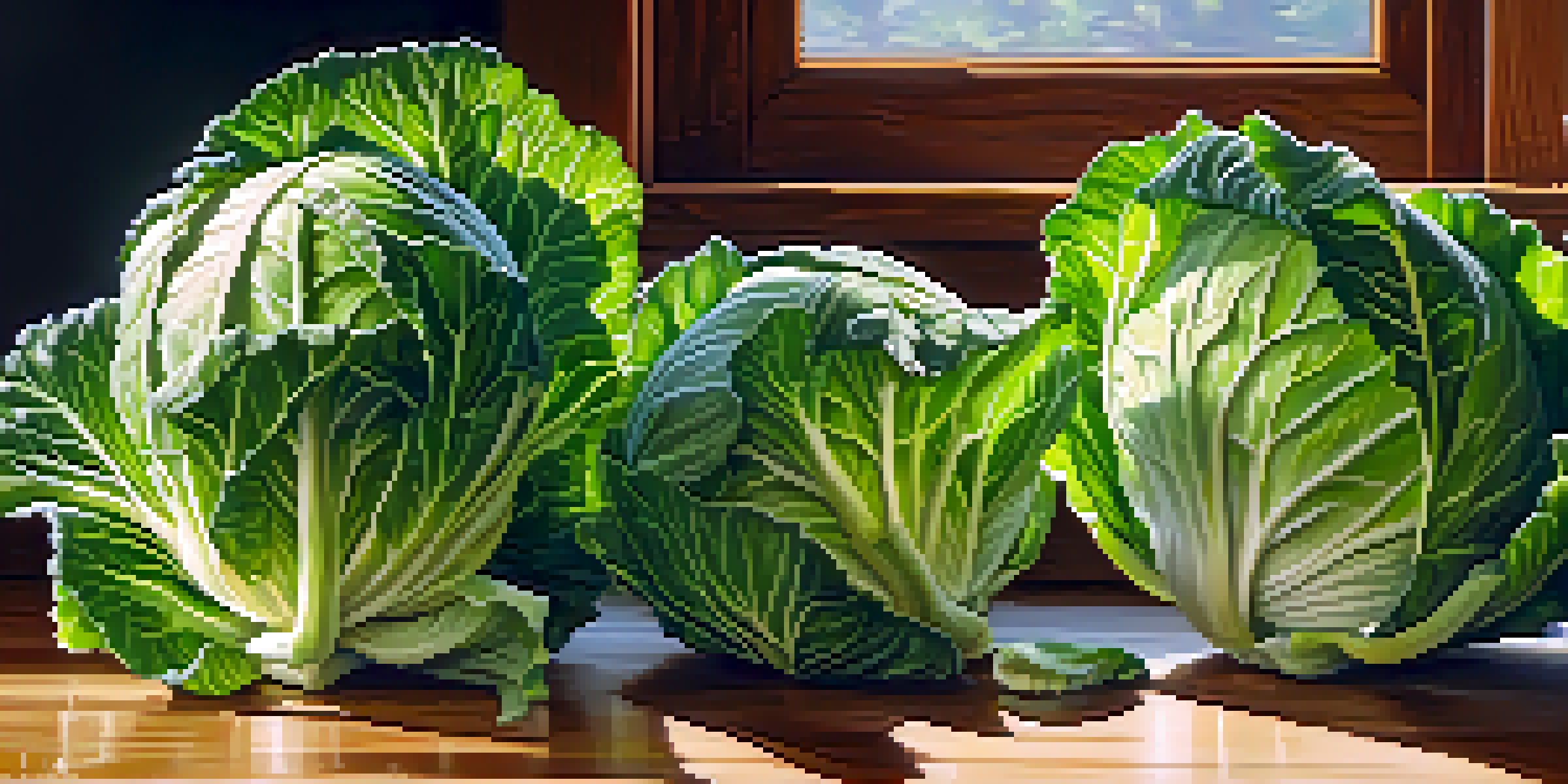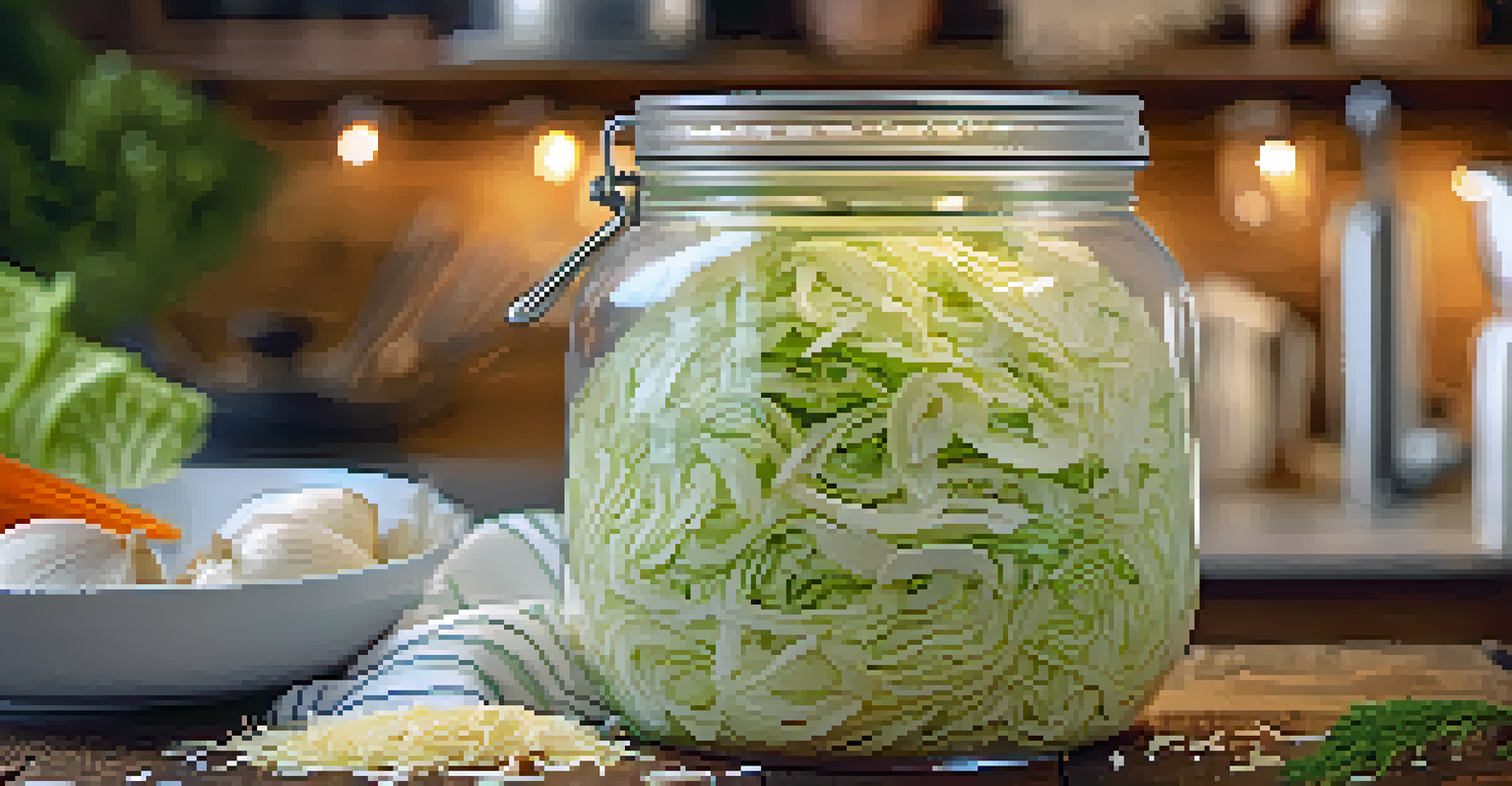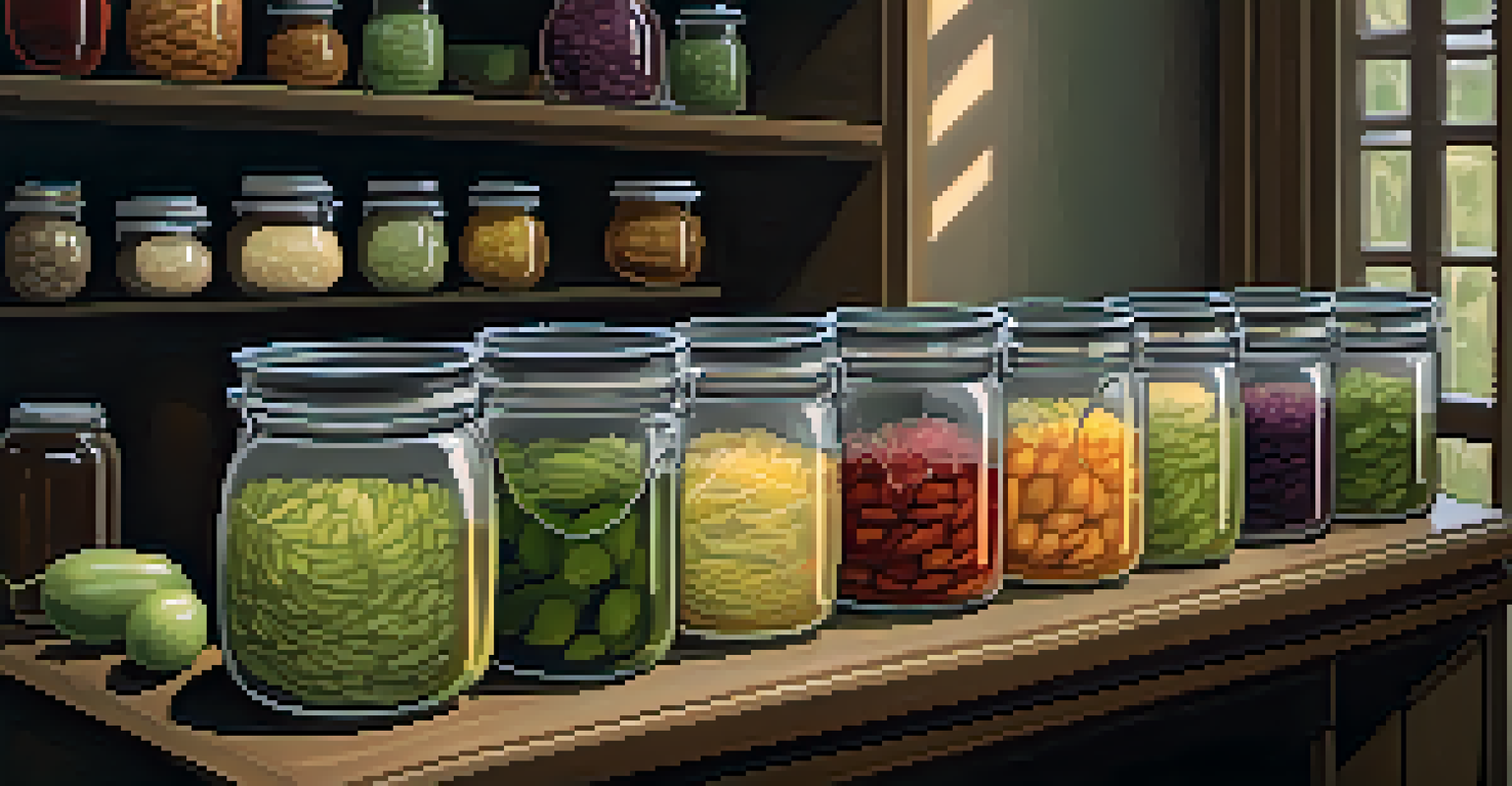DIY Sauerkraut: A Step-by-Step Fermentation Guide

Understanding Fermentation and Its Benefits
Fermentation is a magical process where microorganisms break down sugars, creating beneficial bacteria. This not only preserves food but also enhances its nutritional value. For example, sauerkraut is rich in probiotics, which support gut health and digestion.
Fermentation is the ultimate probiotic and is essential for health and vitality.
Making sauerkraut at home is not only satisfying but also allows you to control ingredients and flavors. Unlike store-bought options, your homemade version will be free of preservatives and additives. Plus, there's something incredibly rewarding about watching your cabbage transform over time.
Incorporating fermented foods like sauerkraut into your diet can lead to improved immunity and better nutrient absorption. So, if you’re looking for a delicious way to boost your health, fermenting your own sauerkraut is a fantastic start.
Gathering Ingredients and Equipment for Sauerkraut
To make sauerkraut, you only need a few simple ingredients: fresh cabbage, salt, and optional seasonings like caraway seeds or garlic. Choosing the right cabbage is essential; look for firm, green heads without blemishes for the best results. The salt is crucial as it helps draw out moisture and creates the right environment for fermentation.

In addition to ingredients, you'll need some basic equipment: a large mixing bowl, a knife or mandoline for shredding, and a fermentation vessel. Many people use glass jars or crocks, which allow you to monitor the fermentation process easily. It's important to ensure everything is clean to prevent unwanted bacteria from spoiling your batch.
Fermentation Boosts Nutrition
Fermentation enhances food preservation and increases nutritional value, as seen with probiotic-rich sauerkraut.
Don’t forget to have a weight or something heavy to keep the cabbage submerged in its own brine. This is vital for a successful fermentation, as exposure to air can lead to mold growth. With the right ingredients and equipment ready, you’re all set to start your sauerkraut journey.
Step 1: Preparing the Cabbage for Fermentation
Start by removing any outer leaves from the cabbage and cutting it into quarters. From there, you can shred the cabbage using a knife or a mandoline, aiming for strips about 1/4 inch thick. The key here is to keep the pieces uniform, which helps in even fermentation.
Food is not just what we eat, it’s a form of medicine that can heal our bodies and nourish our souls.
Once you have your shredded cabbage, place it in a large mixing bowl and sprinkle it with salt. The general rule is about 2% salt by weight of the cabbage, but don’t stress too much about precision. As you mix the cabbage and salt together, you'll start to notice the cabbage releasing its moisture, creating a brine.
Keep massaging and mixing the cabbage for about 5-10 minutes until it becomes limp and watery. This process is not only essential for flavor but also crucial for creating the anaerobic environment needed for fermentation. Now that your cabbage is prepped, you're ready for the next step.
Step 2: Packing the Cabbage into the Jar
With your cabbage prepared, it's time to pack it tightly into your fermentation vessel. Start by adding a handful of cabbage at the bottom of the jar, pressing it down firmly with your fist or a tamper. This helps release even more brine and eliminates air pockets.
Continue layering and pressing the cabbage until the jar is filled, leaving about an inch of headspace at the top. It's important to ensure that the cabbage is completely submerged under the brine to prevent spoilage. If needed, you can add a bit of extra water mixed with salt to cover the cabbage entirely.
Simple Ingredients for Sauerkraut
Making sauerkraut requires just fresh cabbage, salt, and optional seasonings, making it accessible for home cooks.
Once packed, place a weight on top of the cabbage to keep it submerged. Cover the jar with a cloth or a loose lid to allow gases to escape while keeping dust and insects out. Now, you're on your way to some delicious homemade sauerkraut!
Step 3: Fermenting Your Sauerkraut
Fermentation is where the magic happens! Place your packed jar in a cool, dark place, ideally around 65-75°F (18-24°C). This temperature range is perfect for the beneficial bacteria to thrive while keeping harmful bacteria at bay. You might want to check it daily to ensure everything is submerged and to release any built-up gases.
You can expect to see bubbles and a tangy smell develop over the next few days. This is a good sign that fermentation is occurring! Depending on your taste preferences, you can ferment your sauerkraut for anywhere from 1 to 4 weeks. The longer you let it sit, the tangier it will become.
Taste testing is key during this step! Around the week mark, start checking the flavor. If you’re happy with the tang, it’s time to move on to the next step. If you prefer a stronger flavor, just let it ferment a bit longer. Remember, every batch is unique!
Step 4: Storing and Enjoying Your Sauerkraut
Once your sauerkraut has reached the desired flavor, it’s time to store it. Carefully transfer it to smaller glass jars, leaving a little brine in each to keep it fresh. Seal the jars tightly and store them in the fridge; this will slow down the fermentation process and help preserve the flavor.
Homemade sauerkraut can last for several months when stored correctly, so you can enjoy it over time. It’s perfect as a side dish, on top of salads, or even in sandwiches. The possibilities are endless! Plus, you'll have the satisfaction of knowing exactly what went into it.
Troubleshooting Sauerkraut Issues
Common fermentation problems, like mold or excessive saltiness, can often be remedied with proper care and adjustments.
Don't forget to share your delicious creation with friends and family! Homemade sauerkraut makes a great gift and can spark interesting conversations about fermentation. So, get creative with your serving ideas and enjoy the fruits of your labor!
Troubleshooting Common Fermentation Issues
While making sauerkraut is relatively simple, sometimes issues can arise. If you notice any mold on the surface, don't panic! Just remove the moldy layer and ensure the cabbage remains submerged in brine. As long as the smell is pleasant and the cabbage is still crunchy, it should be fine.
Another common issue is if your sauerkraut tastes too salty. If this happens, you can rinse it lightly under cold water before serving. This will help reduce the saltiness while still allowing you to enjoy the flavor and health benefits. Remember, balance is key!

Lastly, if your sauerkraut is too soft, it may have fermented too long or been exposed to too much air. In the future, be sure to keep the cabbage submerged and monitor the fermentation closely. With a bit of care, you’ll be a sauerkraut pro in no time!